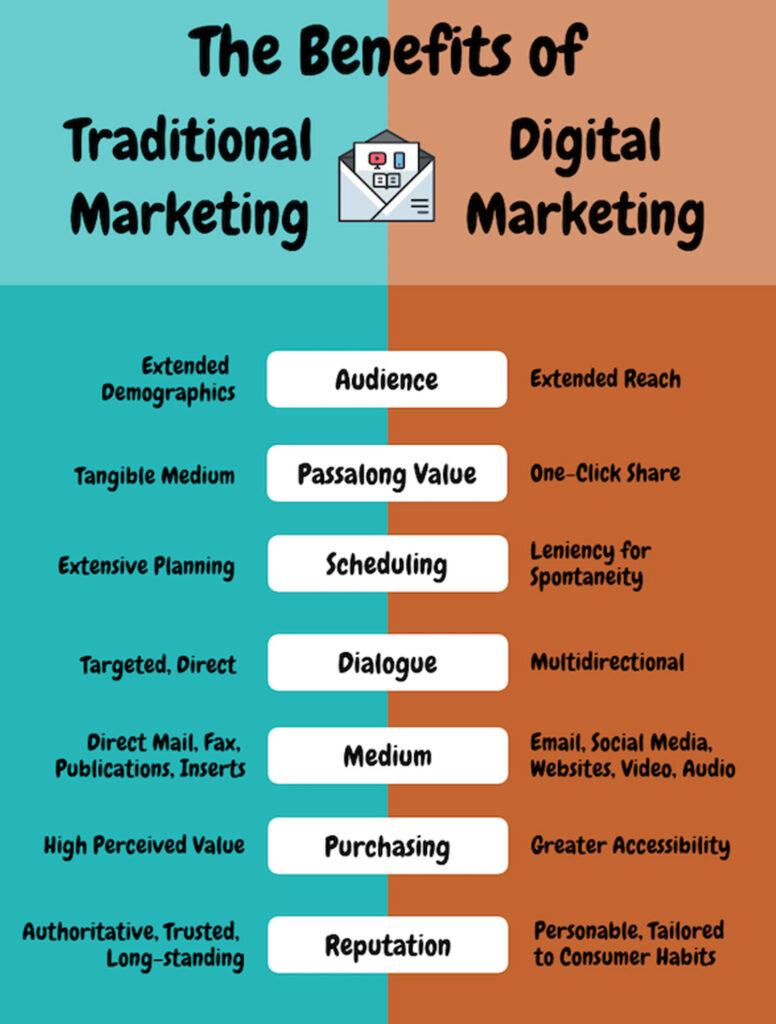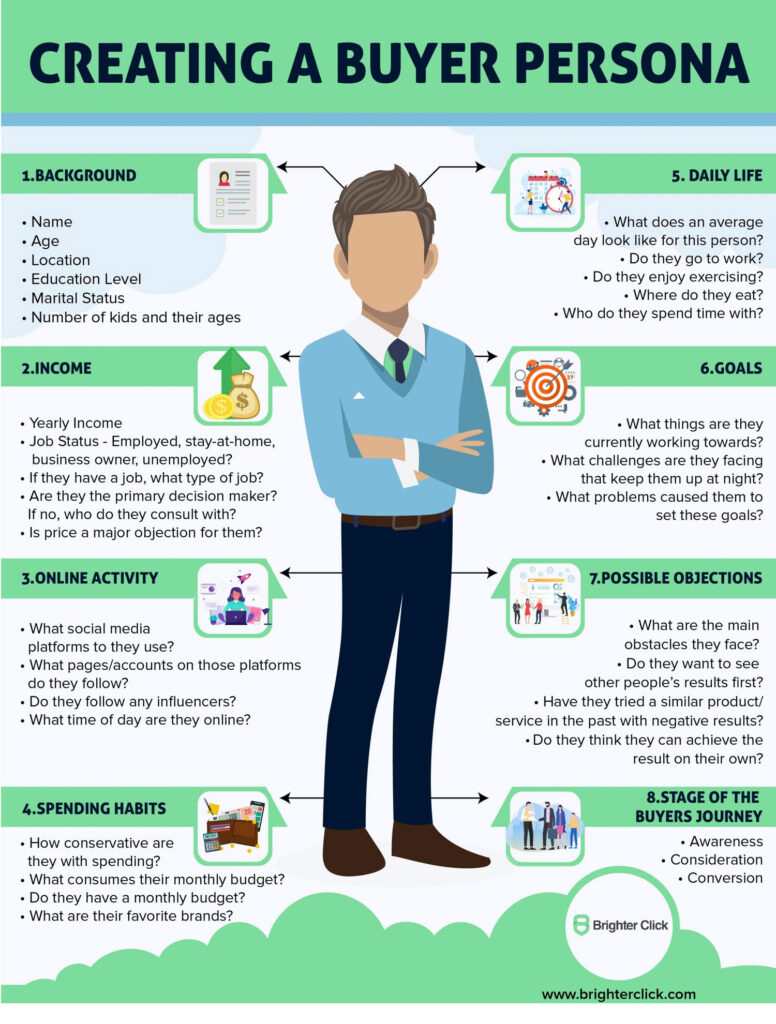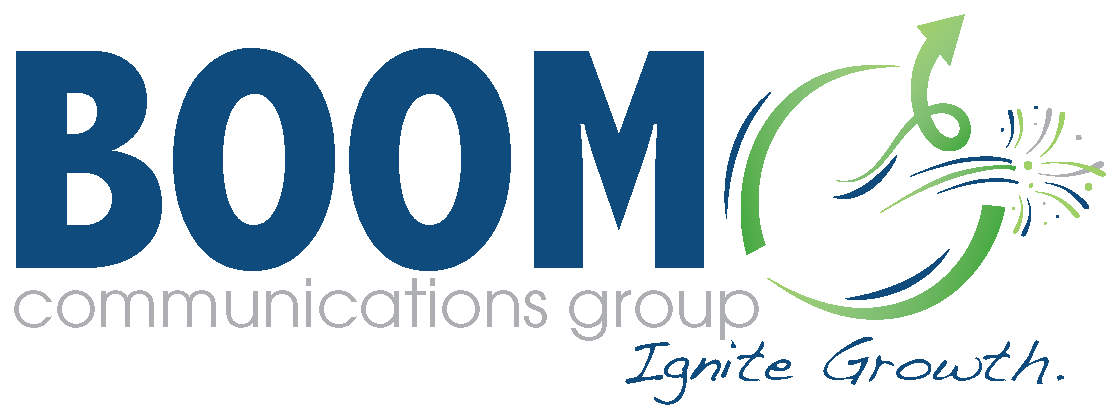
Traditional Marketing vs. Digital Marketing: What Wins for You?
Everywhere they turn, today’s consumers receive countless marketing messages. When it comes to traditional marketing vs. digital marketing, what helps you stand out from the crowd?
The internet has impacted how people browse and shop for products and services, essentially changing the face of the marketplace. Today, more than 2 billion people shop online for products and services that meet their unique needs. Many still rely on print ads and traditional marketing to learn about companies and products. At least 72% of all brand awareness comes from television commercials. So how do businesses create effective marketing strategies that deliver the right message to people through the most effective channels?
Keep reading to learn about traditional marketing vs. digital marketing and to see which approach will deliver the best results.
Key Takeaways
- Traditional marketing promotes a business without using the internet and primarily relies on print or broadcast channels.
- Digital marketing is an internet-based approach that uses online channels to reach a target audience.
- The greatest differences between traditional and digital marketing involve audience reach, budget, and analytics.
- Knowing your audience and recognizing your goals will help you determine which marketing approach would be most effective for your business.
What Exactly Is Traditional Marketing?
Traditional marketing is any promotional method that doesn’t involve the internet. Traditional marketing channels typically include print or broadcast platforms, like:
- Print ads (newspaper and magazine)
- Billboards
- Direct mail
- Television commercials
- Radio ads
Traditional marketing methods have withstood the test of time, so consumers of all ages trust them. However, because it doesn’t require users to be tech-savvy, traditional marketing is often preferred by an older target market. Millennials listen to downloaded playlists and stream shows, and most get their news from social media. Meanwhile, consumers aged 65 and up prefer to get their news from an actual newspaper and utilize newspaper printing and magazine printing services.
When you know who you’re trying to reach, traditional marketing can be a powerful tool to increase advertising revenue, grow page count, and grow distribution.
What Does Digital Marketing Include?
Digital marketing is an internet-based approach to business promotion and refers to any efforts that take place online to help you reach your target market. Digital marketing campaigns use channels like:
- Email campaigns
- Web pages
- Search engines
- Social media
- Pay-per-click advertising
- Mobile devices
Digital marketing is especially effective for businesses with a younger target market. Millennials are online almost constantly, so it makes sense to reach them digitally. They’re also more connected with others through the internet, so methods like influencer marketing and social media posts are an effective way to increase brand awareness and drive traffic to your website.
Companies also use digital marketing when they want to change their message frequently. With print advertising, messages stay with consumers until there’s a new issue or, ultimately, recycled. Digital ads and messages can change with the click of a button, so they’re appealing to a business trying to capture market share in a fast-paced and constantly evolving market.
The following video further explains digital marketing and provides helpful tips to master this approach:
Traditional Marketing vs. Digital Marketing: A Comparison
Traditional and digital marketing offers several benefits to companies looking to boost their bottom line. They also each have their drawbacks. Here are three categories most impacted by traditional and digital marketing differences.
1. Audience Reach
Traditional marketing is easy to comprehend, so it’s ideal for an older target audience that lives in a rural area where internet access is scant or is low-income and may not have access to digital devices. Traditional marketing is also a great way to connect with a local audience, as television, radio, and newspaper ads typically reach nearby consumers.
Because digital marketing requires your audience to access the internet to receive your message, you may limit your reach. Even so, you can segment your audience into highly specific subsets for more targeted messaging and a higher chance of conversions. Digital marketing also allows you to reach a global audience at the click of a button, gaining greater visibility, increasing brand awareness, and driving more traffic to your website for revenue generation.
2. Marketing Budget
Overall, the cost of traditional marketing is higher than that of digital marketing. But those promotions also last longer. If you purchase a billboard spot for a month, it’s a large fee, but you’re reaching potentially hundreds of people on their way to and from area destinations every day.
Digital marketing is adjustable depending on your budget. With pay-per-click advertising, you can set a limit for how much you want to spend, and your ad will only run until you’ve reached that limit. Digital marketing campaigns are highly scaleable, allowing you to spread your advertising budget across multiple channels for maximum reach and conversions.
3. Analytics
Possibly the greatest difference in digital marketing vs. traditional marketing is marketers’ ability to track data through digital methods. Digital tactics can help businesses understand a wealth of information about their consumers and their marketing campaigns, like user behavior and ad performance.
Thesedetails help companies create more effective messaging that resonates with their audience. It also shows them which ads aren’t performing well and why, helping businesses pivot and adjust to ensure their marketing strategy delivers the results they hope to see.
With traditional marketing, there aren’t nearly as many ways to track the efficacy of your marketing campaign. You don’t have a way to know which billboard is bringing in customers or which radio ad on which station caught your audience’s attention.

Which Marketing Approach Should You Use?
When determining which would be most effective for your business, traditional marketing vs. digital marketing, the answer comes down to two main considerations. First, who are you trying to reach? Create buyer personas to identify your ideal customer and determine their needs and preferences. Traditional marketing may be the best option if they’re an older market that lives nearby.

Next, you need to identify your marketing goals. What are you trying to accomplish by advertising? How much do you want to spend? What kind of people are you trying to attract? Set some objectives, create a game plan for achieving those goals, and decide whether traditional or digital marketing will help get you there.
As you consider these points, you may conclude that the ideal strategy for your business is to take an omnichannel approach that uses both traditional and digital methods to cast the widest net, maximize your marketing budget, and track your efforts for optimal results.
Build an Effective Marketing Strategy
BOOM Communications is an advertising and marketing firm that helps you create a marketing strategy that helps you connect with your audience and reach your goals.
Contact BOOM Communications today to learn more about traditional marketing vs. digital marketing and see how we can help you build an effective marketing strategy that boosts your bottom line.
